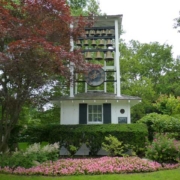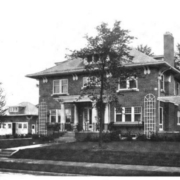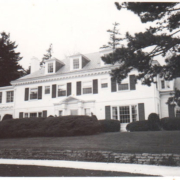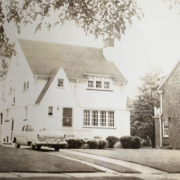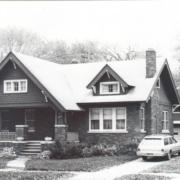Historical Architecture of Grosse Pointe – “Joy” in the Farms.
Located on the corner of Moross and Grosse Pointe Blvd. the Joy bells in Grosse Pointe Farms are a familiar sight, they stand as an iconic structure that is very much part of the community.
The Bells once belonged to the Joy family and were part of the grand estate known as Fair Acres, previously located at 301 Lake Shore. Henry B. Joy commissioned the bells in 1929 from the Paccard Foundry in the French Alps for his estate. Each of the 15 bells bear the inscription “Henry B. Joy”, the date 1929, along with the seal and name of the bell founder George Paccard et Fils. It is said that when the bells were made they were horribly out of tune because they were not tuned at the foundry. Nevertheless the bells were installed at Mr. Joys Fair Acres residence where they rang daily between the hours of 8am and 8pm. According to Folklore, during the summer months, Mrs. Joy would ring the bells to alert her husband to come in from his yacht for dinner.
Henry B. Joy was born in Detroit in 1864. A banker and financier Joy, along with a team of investors purchased the Ohio Automobile Company in 1902, and the company soon became known as the Packard Motor Car Company. The company moved to Detroit and in 1905, Joy commissioned Albert Kahn to build the world’s first reinforced concrete factory on East Grand Boulevard. The company grew tremendously under his leadership and in 1909 he became president.
Henry Joy was fast gaining a reputation as a major developer of automotive activities. In 1913, Joy and Carl Graham Fisher were instrumental as the key organizers of the Lincoln Highway Association, a group focused on building a concrete road from New York to San Francisco. Joy has sometimes been called the father of the nation’s modern highway system, and Joy once described his effort to create the Lincoln Highway as “the greatest thing I ever did’.
In 1910 Joy commissioned the services of Albert Kahn to create a home that would employ the innovative practices used in Kahn’s industrial designs. The large residence, at the time, was unique in its design with a long uninterrupted façade that overlooked the lake, classic symmetry and large window openings at regular intervals.
The design was reminiscent to Kahn’s industrial and commercial work. Many of the rooms had a glorious view of the lake, including the glass-enclosed sunroom in the west wing. It was a home, said to have reflected the personality of Joy and his wife Helen, daughter of John S. Newberry. The home also included a boat house (designed by Kahn) as part of the estate, and housed Joy’s 100-foot yacht. In 1934 the boathouse was leased to Crescent sailors who were in need of a clubhouse. It was purchase by the club in 1958 from the Joy estate.
Mrs. Helen Joy was also described as a remarkable person, championing the cause of many civic organizations. She outlived her husband by over twenty years. Her death in 1958 was said to have marked the passing of an era, including that of their home – Fair Acres was demolished and the land sub-divided into lots.
Shortly before the estate was demolished the tower and the bells were given to the City of Grosse Pointe Farms, and have been relocated twice, standing in their present location since 1992. The clock mechanism attached to the bells rings the Westminster Quarters every 15 minutes and strikes on the hour. There is also a mechanism attached to the bells that can play tunes.
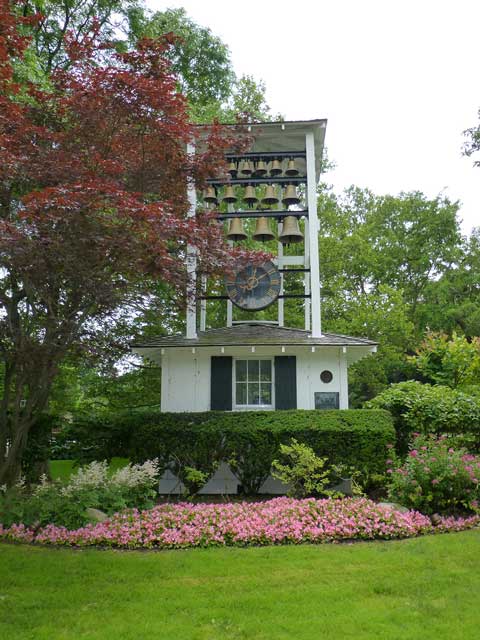
The Grosse Pointe Farms foundation restored the bells and they now ring just as they did when they were first made.
The bells stand as a testament to a man that helped inspire the auto industry in America. They provide a gracious reminder of the grand mansions of yesteryear that once graced the community, and as you turn the corner onto Grosse Pointe Blvd, they are a “joy” to behold.
Written by Katie Doelle
© 2015 Katie Doelle

